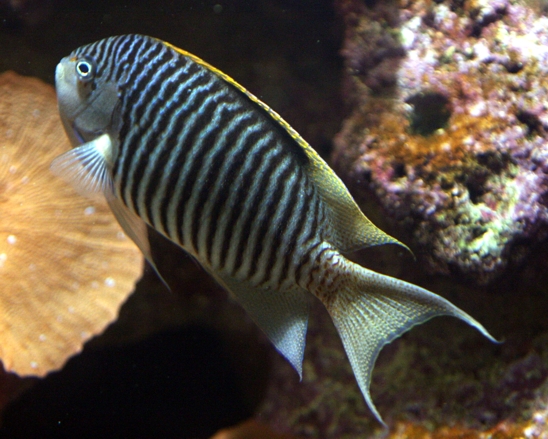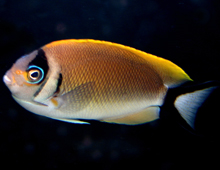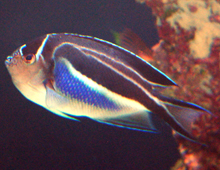
In contrast to many other angelfish, which live in pairs, swallowtail angels, in the genus Genicanthus live like fairy basslets, with a dominant male guarding a harem of females. As with fairy basslets, if the male dies, the dominant female will become male and take charge of the harem. This species is found only in the Red Sea and the Western Indian Ocean. Only the male has the zebra pattern but only the female has the black stripes at the top and bottom of the tail, commemorated by the Latin name “caudovitatu”, which means “striped tail”.





